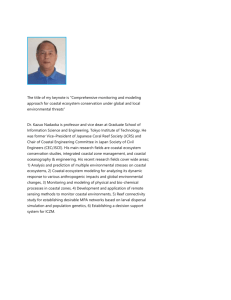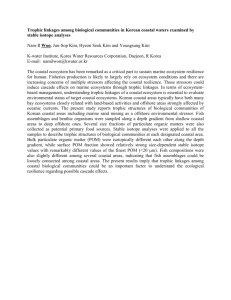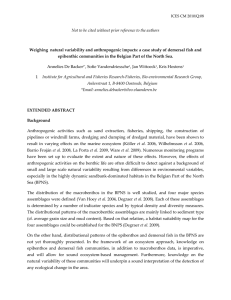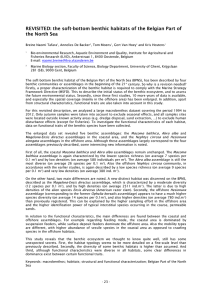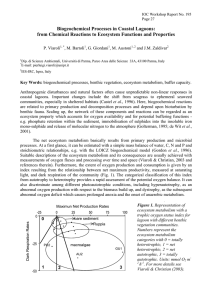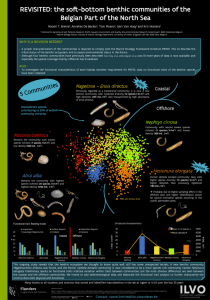Long-term trends in the soft bottom benthic fauna of the... part of the North Sea: results of 30 years environmental
advertisement
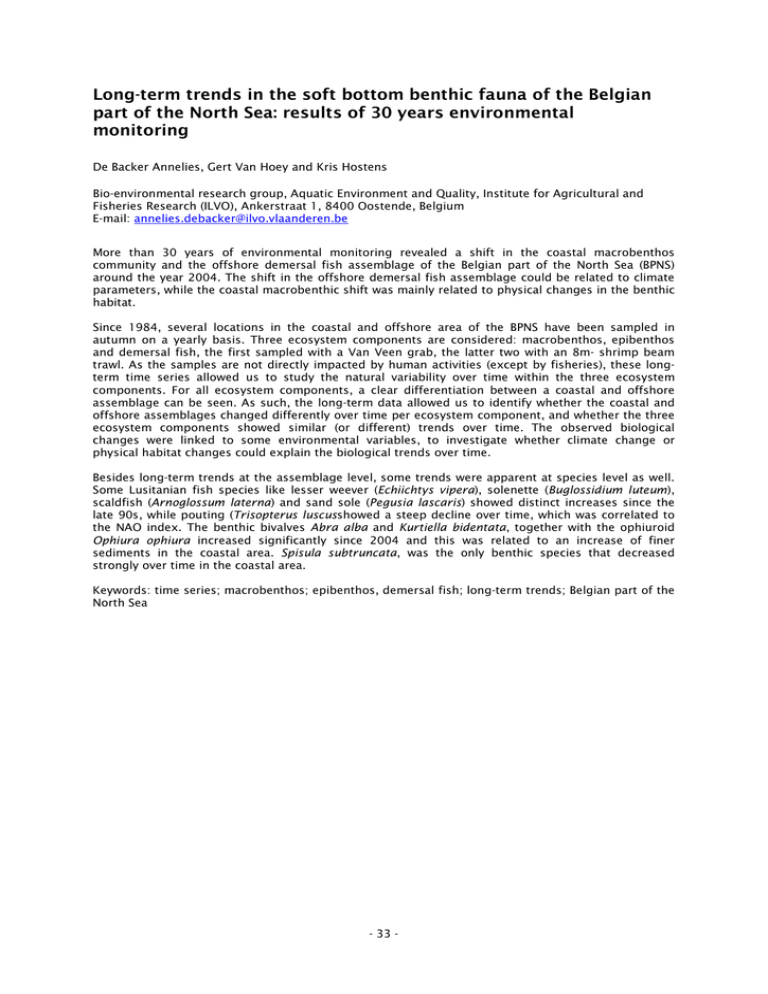
Long-term trends in the soft bottom benthic fauna of the Belgian part of the North Sea: results of 30 years environmental monitoring De Backer Annelies, Gert Van Hoey and Kris Hostens Bio-environmental research group, Aquatic Environment and Quality, Institute for Agricultural and Fisheries Research (ILVO), Ankerstraat 1, 8400 Oostende, Belgium E-mail: annelies.debacker@ilvo.vlaanderen.be More than 30 years of environmental monitoring revealed a shift in the coastal macrobenthos community and the offshore demersal fish assemblage of the Belgian part of the North Sea (BPNS) around the year 2004. The shift in the offshore demersal fish assemblage could be related to climate parameters, while the coastal macrobenthic shift was mainly related to physical changes in the benthic habitat. Since 1984, several locations in the coastal and offshore area of the BPNS have been sampled in autumn on a yearly basis. Three ecosystem components are considered: macrobenthos, epibenthos and demersal fish, the first sampled with a Van Veen grab, the latter two with an 8m- shrimp beam trawl. As the samples are not directly impacted by human activities (except by fisheries), these longterm time series allowed us to study the natural variability over time within the three ecosystem components. For all ecosystem components, a clear differentiation between a coastal and offshore assemblage can be seen. As such, the long-term data allowed us to identify whether the coastal and offshore assemblages changed differently over time per ecosystem component, and whether the three ecosystem components showed similar (or different) trends over time. The observed biological changes were linked to some environmental variables, to investigate whether climate change or physical habitat changes could explain the biological trends over time. Besides long-term trends at the assemblage level, some trends were apparent at species level as well. Some Lusitanian fish species like lesser weever (Echiichtys vipera), solenette (Buglossidium luteum), scaldfish (Arnoglossum laterna) and sand sole (Pegusia lascaris) showed distinct increases since the late 90s, while pouting (Trisopterus luscusshowed a steep decline over time, which was correlated to the NAO index. The benthic bivalves Abra alba and Kurtiella bidentata, together with the ophiuroid Ophiura ophiura increased significantly since 2004 and this was related to an increase of finer sediments in the coastal area. Spisula subtruncata, was the only benthic species that decreased strongly over time in the coastal area. Keywords: time series; macrobenthos; epibenthos, demersal fish; long-term trends; Belgian part of the North Sea - 33 -


